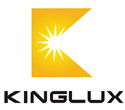| TEL:
+86 510 82123195
|
| Mobile: |
+86 18168862789
|
| FAX:
+86 510 84602998
|
| Email: |
info@kingluxlens.com
|
| MSN:
kingluxlens@hotmail.com
|
| Skype:
kingluxlens
|
| Q Q:
2852820700,2852820701,2852820699
|
|
|
| |
Company News
|
Current Location: Home >
News >
Company News
|
|
Museum lighting-light on the screen
|
 |
For the lighting and lighting of cultural relics, calligraphy and painting, museum exhibition halls usually use three kinds of light sources-artificial light sources such as fluorescent lamps, incandescent lamps and LED lamps. Painting and calligraphy collections will suffer varying degrees of damage under direct light. The influence of light on painting and calligraphy has three aspects: first, light radiation; second, light and heat energy; third, the destructive effect of photooxidation.
1. Screen optical radiation
Light is the natural factor that has the greatest impact on characters and pictures, especially ultraviolet light, which can cause the pigments of characters and pictures to degenerate, decompose, and change colors. Lamp factors cause paper changes; ultraviolet light mainly comes from the sun. When the sun shines on the paper, the fiber undergoes oxidation reaction. Discoloration, chemical reactions such as photodecomposition, photooxidation and photohydrolysis of the fiber under light will cause the fiber strength to decrease. Paper cultural relics have strict control on the light. Incandescent lamps and fluorescent tubes also have 400-700nm ultraviolet light, incandescent lamps And fluorescent lamps have a certain destructive effect on paper, because they can emit ultraviolet light after being energized, especially the greater the wattage of fluorescent lamps, the more ultraviolet light emitted, and the greater the damage to the paper. Therefore, hanging calligraphy and painting should avoid sunlight, incandescent lamps and fluorescent lamps and other ultraviolet light sources. Long-term exposure can also make the quality of the calligraphy and painting paper yellow.
Second, the light temperature on the screen
The light of the lamp has thermal energy, and when it radiates outward, it will produce a thermal effect. Visible light and infrared have great thermal effects and are called heat rays. Light radiant heat has an impact on the durability of plant cellulose materials such as cotton and paper, increasing the local temperature of the paper screen, reducing the degree of cellulose polymerization, and reducing the mechanical strength. As a result, the elasticity of paper, textiles and other materials is weakened and brittle, and the paper in painting and calligraphy becomes yellow, pigments are discolored, and powdered and peeled.
Illumination and intensity will cause serious and irreparable damage to the paper screen. Too high light intensity will cause the oil painting to fade or darken, resulting in blurring or even disappearing of images and details. In order to avoid damage caused by light, the oil painting should be placed in a dark area that will not be exposed to direct sunlight.
Excessive light can also cause excessive heat buildup, which can damage the painting. Therefore, the spotlight that should be scattered should be installed at least about three meters away from the oil painting to avoid potential heat accumulation.
There must be a certain temperature and humidity. Calligraphy and painting are mainly composed of paper and silk, silk, silk, brocade and other fabrics. They are very delicate and have their own optimal temperature and humidity requirements. Generally speaking, a temperature of 15°C to 18°C and a relative humidity of 55% to 65% are most beneficial to the preservation of home calligraphy and painting. Especially for the precious calligraphy and painting, more attention should be paid to the collection. Here we demonstrate through a small experiment
Experimental steps and operating requirements:
a. Use a mirror to project sunlight onto a piece of paper, compare one mirror and multiple mirrors, what is the difference in the strength of the reflected light;
b. Use a thermometer to measure the temperature at the spot of a piece of paper. Compare the temperature displayed by a mirror with multiple mirrors.
Experimental conclusion: the temperature of light intensity is higher, and the temperature of light weak is lower.
3. Photooxidation
When the polymer is exposed to light in an oxygen-containing environment, it will produce a photooxidation reaction, and when the cellulose in the polymer's chain-scission paper undergoes a photooxidation reaction, it will generate easily pulverized oxidized fibers, which will reduce the strength and durability. Handwriting, pigments, etc. will also fade under the action of photooxidation.
Museum is an institution that collects, protects, researches, displays and publicizes various cultural relics, natural specimens and artworks. In order to properly protect these precious historical and cultural properties, especially the light on the paintings of calligraphy, traditional Chinese painting, oil painting, silk painting, etc. must be protected from optical radiation (including visible radiation, ultraviolet radiation and infrared radiation), and the temperature of the picture; In order to create a good visual environment for the audience, it is necessary to increase the illuminance of the exhibits, and the special lighting fixtures with solid design and screen glazing must be carefully designed. In short, to solve and handle the light on the screen well, it is necessary to achieve the purpose of not only conducive to viewing, but also conducive to protection.
|
|
|


